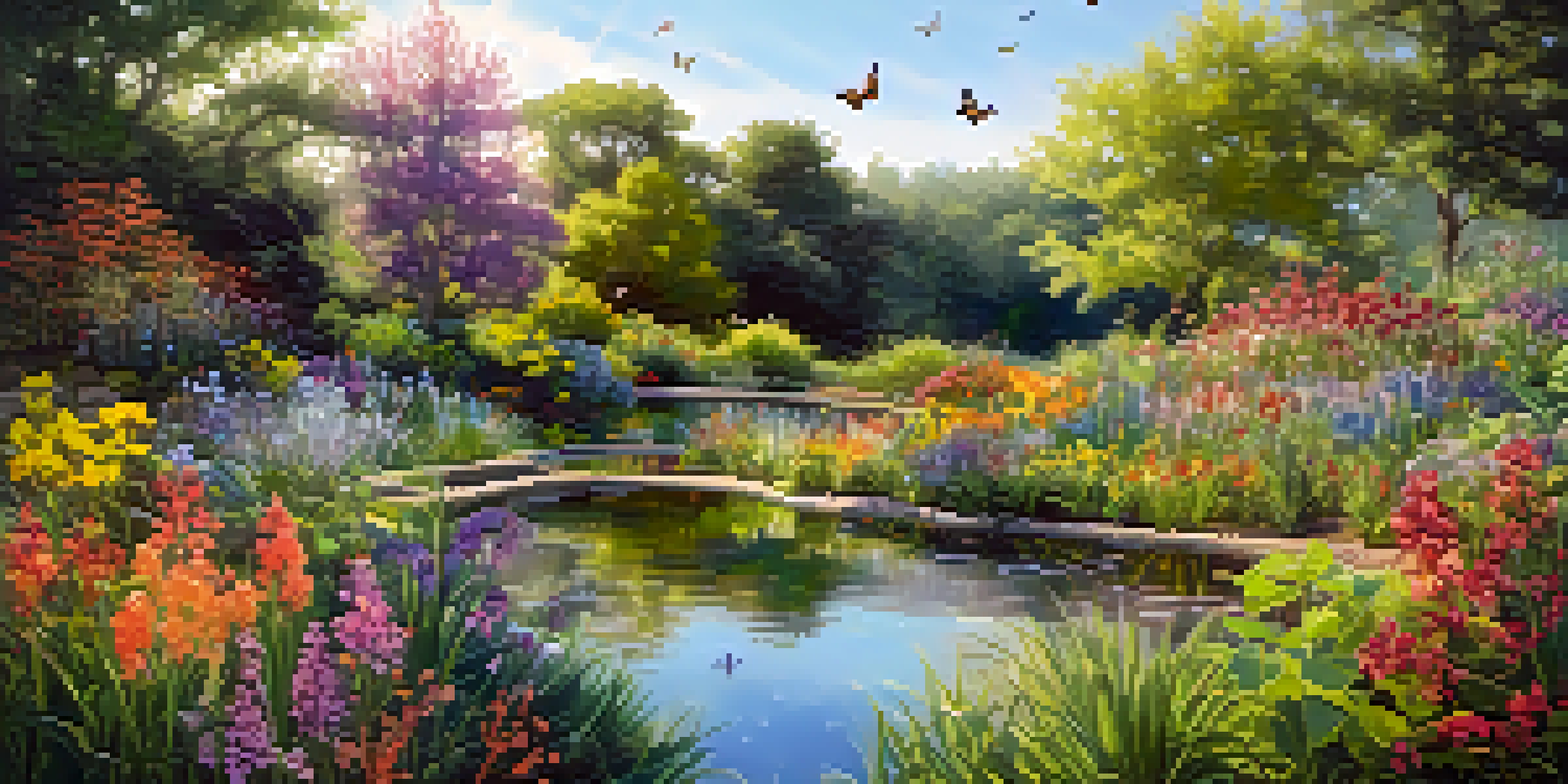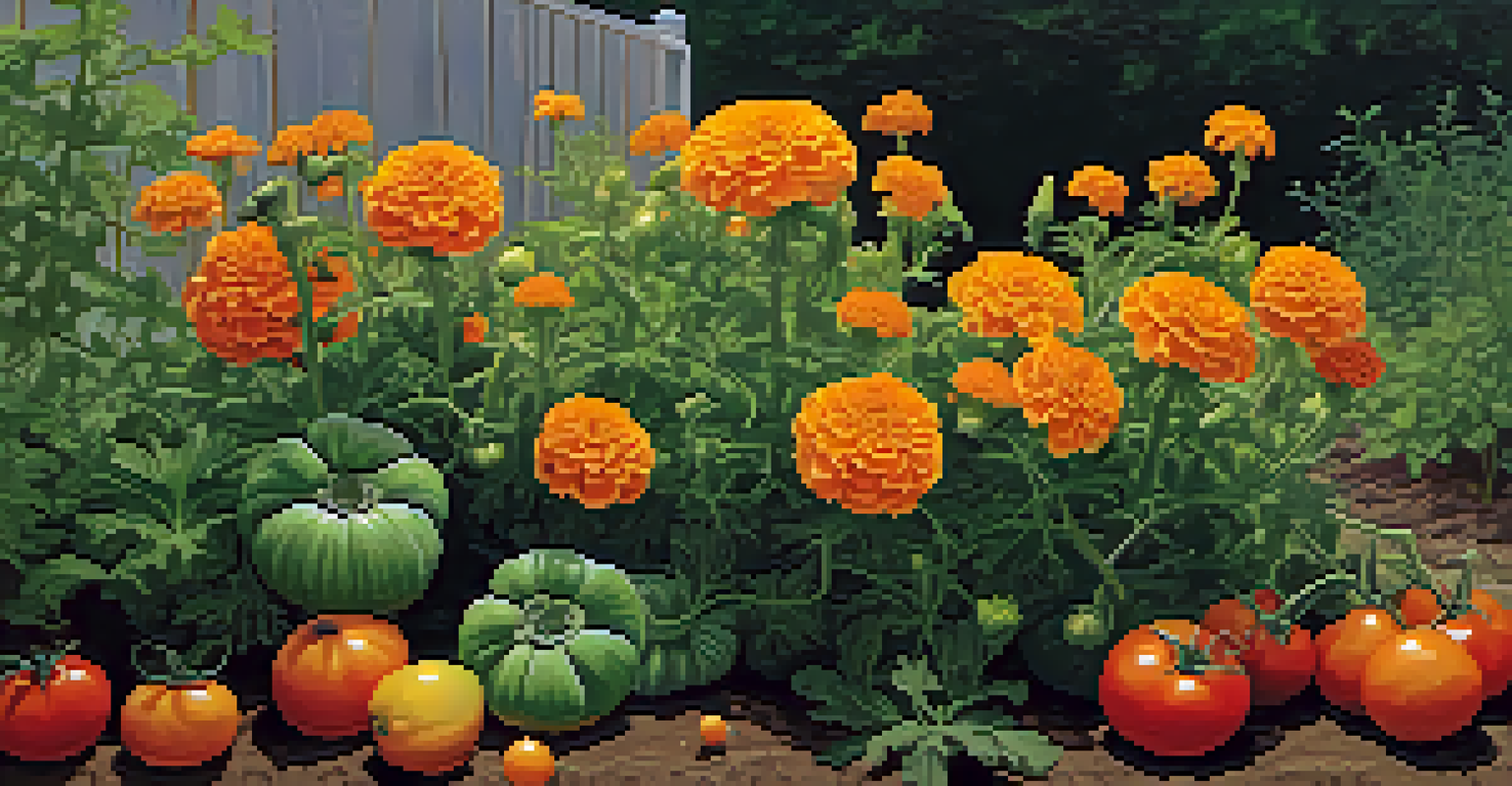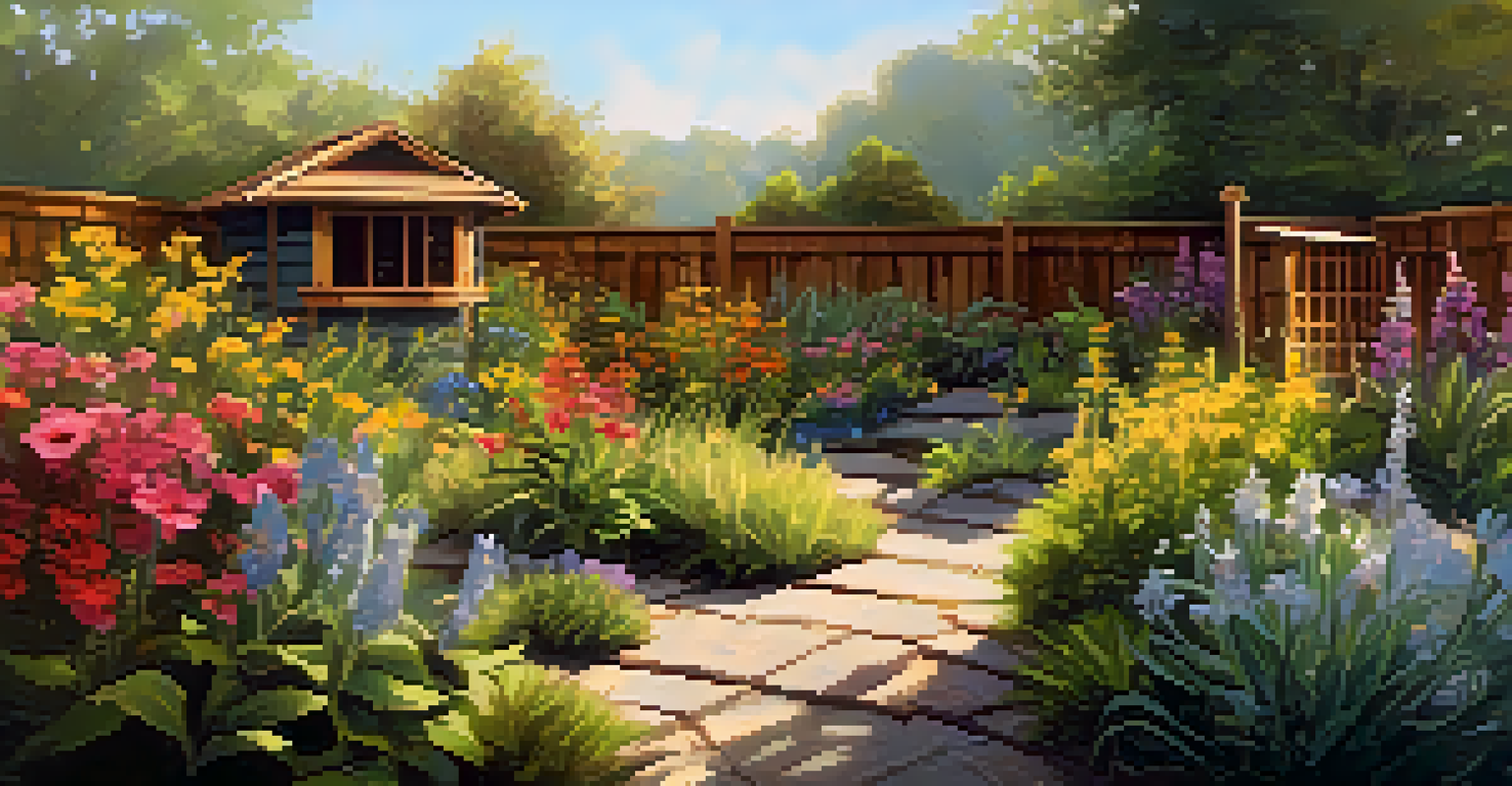Creating a Biodiverse Garden to Support Ecosystem Health

Understanding Biodiversity and Its Importance
Biodiversity refers to the variety of life in a particular habitat, including the different plants, animals, and microorganisms. This variety is crucial for ecosystem health because each species plays a unique role, from pollination to pest control. In essence, a biodiverse garden acts like a well-functioning machine, where each part contributes to the overall performance.
The diversity of life is the foundation for a better life.
Healthy ecosystems provide essential services such as clean air, water purification, and fertile soil. When we increase biodiversity in our gardens, we enhance these services, making our outdoor spaces more resilient to disease, climate change, and environmental stress. Think of it as creating a safety net for nature, where diverse species can support one another.
Moreover, a biodiverse garden can improve our mental and emotional well-being. Studies have shown that spending time in nature, surrounded by various plants and wildlife, can reduce stress levels and increase happiness. So, not only does biodiversity benefit the environment, but it also enriches our lives.
Choosing Native Plants for Your Garden
When planning a biodiverse garden, one of the best places to start is by selecting native plants. Native species are adapted to your local climate and soil conditions, making them easier to grow and maintain. They also provide essential habitat and food sources for local wildlife, such as birds, bees, and butterflies.

For example, planting native wildflowers can attract pollinators, which are vital for the reproduction of many plants. By choosing plants that naturally thrive in your area, you create a welcoming environment for these creatures. Plus, native plants typically require less water and fewer chemicals, promoting a healthier ecosystem.
Biodiversity Enhances Ecosystem Health
A diverse range of species in your garden supports essential ecosystem services, making it more resilient to environmental changes.
You can find resources online or at local nurseries to help identify which plants are native to your region. By incorporating a mix of flowering plants, shrubs, and grasses, you can create a vibrant garden that supports a variety of species and enhances the overall beauty of your landscape.
Creating Habitats for Wildlife
A biodiverse garden isn’t just about plants; it’s also about creating habitats for wildlife. Incorporating features like birdhouses, bee hotels, and small ponds can attract various species, providing them with the shelter and resources they need to thrive. These elements can transform your garden into a mini ecosystem, bustling with life.
In nature, nothing exists alone.
For instance, adding a small water feature not only serves as a drinking source for birds but can also support amphibians like frogs and newts. Similarly, leaving some areas of your garden a bit wild can provide crucial cover for small mammals and insects. Think of your garden as a sanctuary where different species can coexist.
Additionally, consider planting a variety of heights and densities to create layers of habitat. Taller plants can provide shelter for birds, while low-growing ground covers can offer hiding spots for smaller creatures. By enhancing these habitats, you foster a thriving community of wildlife that contributes to the overall health of your garden.
Incorporating Edible Plants into Your Garden
In addition to aesthetics and wildlife support, consider incorporating edible plants into your biodiverse garden. Growing fruits, vegetables, and herbs not only provides fresh produce for your table but also helps to create a balanced ecosystem. Many edible plants attract beneficial insects, which can help with pest control naturally.
For example, planting basil alongside tomatoes can deter pests while enhancing the flavor of your meals. This symbiotic relationship is a beautiful way to utilize space while also promoting biodiversity. Plus, the act of gardening can be therapeutic and foster a deeper connection with nature.
Native Plants Foster Local Wildlife
Choosing native plants not only simplifies garden maintenance but also attracts local wildlife, creating a vibrant ecosystem.
When choosing edible plants, aim for a mix of perennials and annuals to ensure that your garden is productive throughout the seasons. This diversity not only enriches your diet but also supports the overall ecosystem health by providing food sources for a variety of wildlife.
Utilizing Companion Planting Techniques
Companion planting is an excellent strategy to enhance biodiversity and maximize space in your garden. This technique involves planting different species together that can benefit each other, either through pest deterrence, nutrient sharing, or providing shade. For example, planting marigolds alongside vegetables can help repel harmful insects.
Another example is growing nitrogen-fixing plants like clover or beans alongside heavy feeders like corn or tomatoes. This natural process enriches the soil, making it healthier for all plants involved. Think of companion planting as creating a cooperative community where different plants work together for mutual benefit.
By thoughtfully arranging your plants, you can create a dynamic garden that thrives on diversity. Companion planting not only enhances productivity but also fosters a more resilient garden ecosystem, reinforcing the importance of each species’ role.
Implementing Sustainable Gardening Practices
Sustainability is crucial when creating a biodiverse garden. Implementing practices like composting, mulching, and using organic fertilizers can significantly reduce your environmental impact. These methods help maintain soil health, support plant growth, and minimize waste, creating a harmonious balance in your garden.
For example, composting kitchen scraps not only reduces landfill waste but also enriches your garden soil with nutrients. Additionally, mulching can help retain moisture and suppress weeds, creating a more favorable environment for your plants. These sustainable practices can enhance biodiversity by promoting healthy growth and resilience.
Sustainable Practices Boost Biodiversity
Implementing sustainable gardening techniques, like composting and organic fertilizers, promotes healthier plants and enhances biodiversity.
By adopting sustainable gardening techniques, you not only protect the environment but also set an example for others. Your garden can become a model of biodiversity and sustainability, inspiring friends and family to embrace these practices in their own outdoor spaces.
Monitoring and Adapting Your Biodiverse Garden
Creating a biodiverse garden is an ongoing journey that requires monitoring and adaptation. Regularly observing the interactions between plants and wildlife can provide valuable insights into what works best in your specific environment. This process allows you to make informed decisions to enhance your garden's biodiversity continuously.
For instance, if you notice certain plants attracting more pollinators, consider planting more of those species. On the other hand, if some plants struggle, it might be time to research alternatives that are better suited to your garden's conditions. This adaptability not only supports your garden's health but also enriches your learning experience.

Documenting your garden's progress can also be helpful. Keeping a journal of observations, successes, and challenges allows you to reflect on your gardening journey and make improvements over time. In this way, your biodiverse garden becomes a living testament to your commitment to supporting ecosystem health.